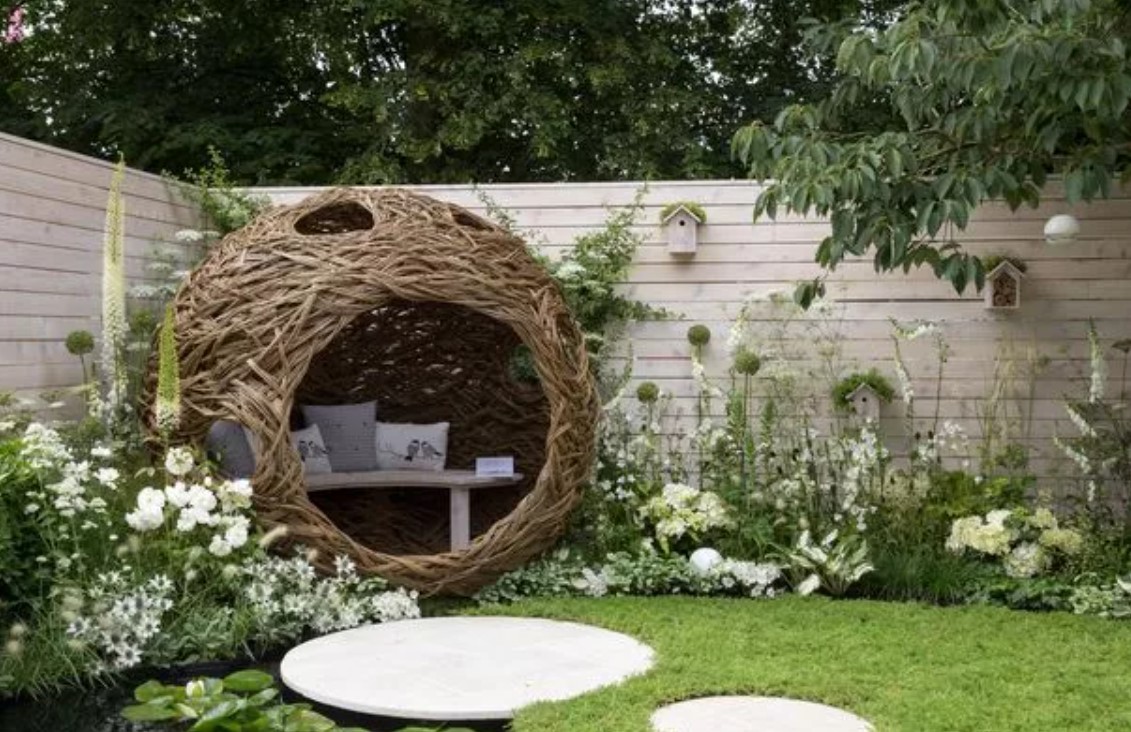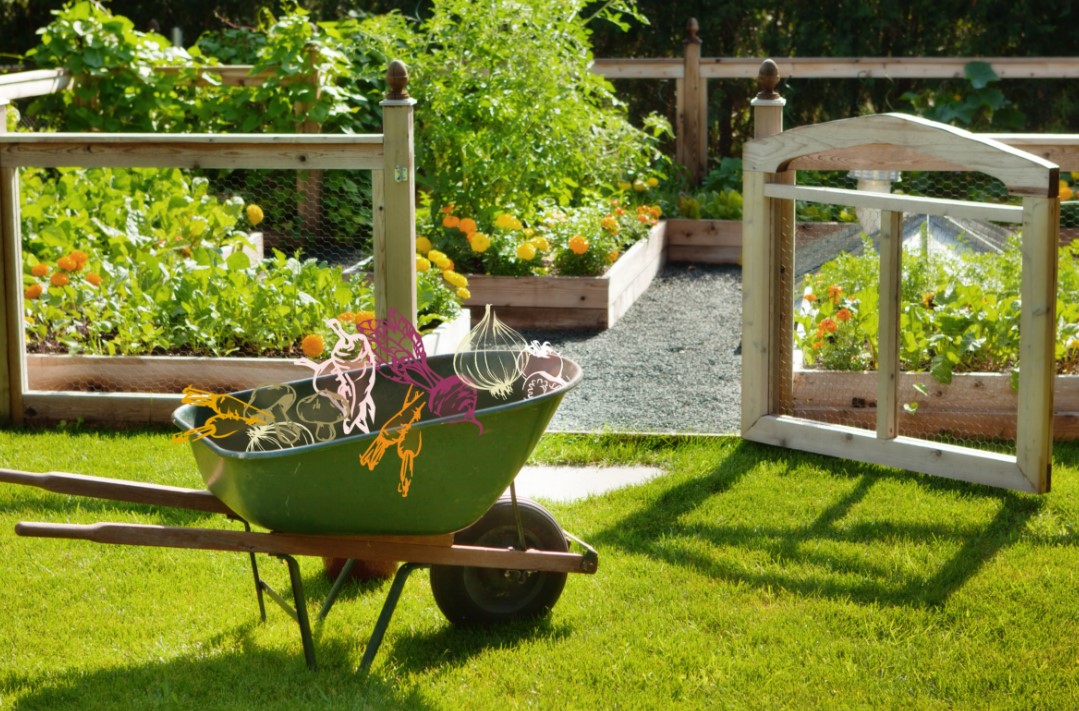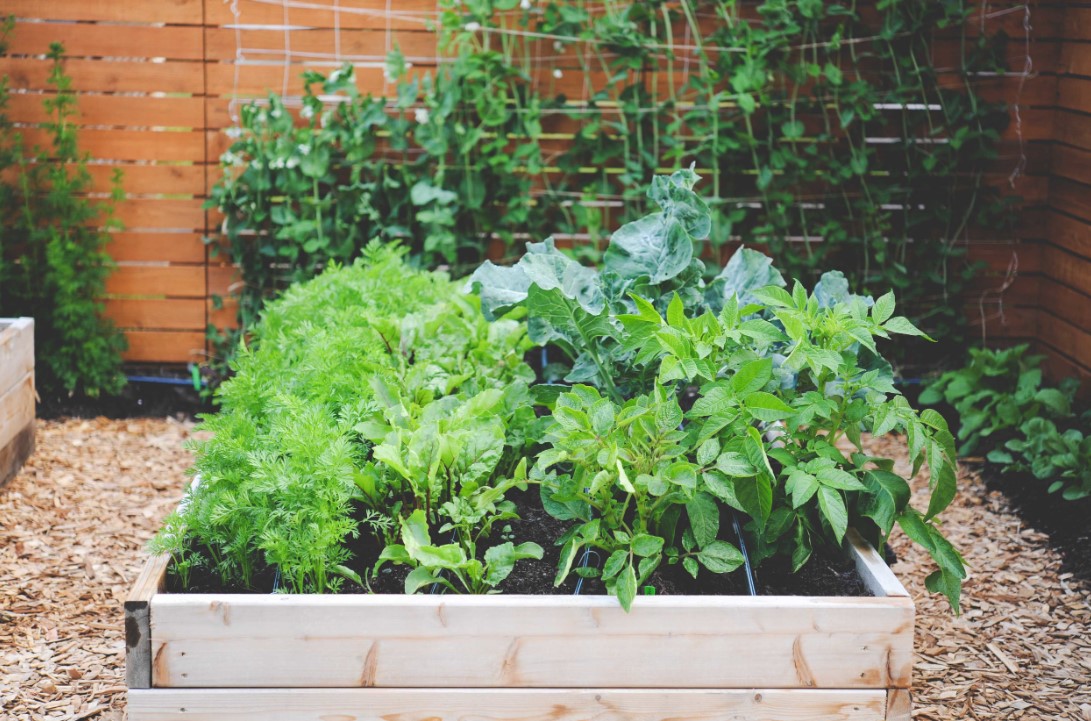Urban gardening has become increasingly popular as city dwellers seek to reconnect with nature and enjoy the benefits of homegrown produce. Whether you have a small balcony or a tiny backyard, cultivating an urban garden is not only possible but also rewarding. Let’s explore some tricks and techniques to help you create a thriving urban garden at home.
Importance of Urban Gardening

Urban gardening, also known as urban agriculture or urban farming, refers to the practice of growing plants and food crops in urban areas. It holds significant importance for both individuals and communities alike, contributing to various aspects of environmental sustainability, community well-being, and personal health. Here are several key reasons why urban gardening is important:
Environmental Benefits
- Green Space Creation: Urban gardening helps create green spaces within densely populated cities, which can otherwise be dominated by concrete and buildings. These green areas contribute to improved air quality by absorbing pollutants and releasing oxygen.
- Biodiversity Support: By cultivating diverse plant species, urban gardens provide habitats and food sources for local wildlife, such as bees, butterflies, and birds. This helps support urban biodiversity and contributes to ecological balance in urban ecosystems.
- Reduction of Urban Heat Island Effect: Plants in urban gardens help mitigate the urban heat island effect by cooling the surrounding environment through shade and evapotranspiration. This reduces overall temperatures in cities, making them more comfortable and reducing energy consumption for cooling.
Social and Community Benefits
- Community Building: Urban gardens serve as gathering places for community members, fostering social interactions, and creating opportunities for collaboration and mutual support among neighbors.
- Education and Skill Development: Gardening in urban settings provides hands-on learning opportunities for people of all ages, teaching valuable skills such as gardening techniques, sustainable practices, and environmental stewardship.
- Food Security and Access: Urban gardens can contribute to local food security by providing access to fresh, nutritious produce in areas where healthy food options may be limited or inaccessible. This is especially important in food deserts or low-income neighborhoods.
Health and Well-being
- Physical Activity Promotion: Engaging in gardening activities promotes physical activity, which contributes to improved cardiovascular health, muscle strength, and overall fitness levels.
- Stress Reduction: Spending time in green spaces and engaging with nature through gardening has been shown to reduce stress levels, anxiety, and symptoms of depression. It provides a therapeutic outlet for urban dwellers amidst the hustle and bustle of city life.
- Nutritional Benefits: Growing fruits, vegetables, and herbs in urban gardens encourages individuals and families to consume more fresh, locally grown produce. This supports a balanced diet rich in vitamins, minerals, and antioxidants.
Economic Benefits
- Cost Savings: Urban gardening can lead to cost savings for individuals and communities by reducing grocery bills and expenses related to transportation and food distribution.
- Economic Opportunities: In some cases, urban gardening initiatives can create economic opportunities through the sale of surplus produce at local markets or through community-supported agriculture (CSA) programs.
Sustainability and Resilience
- Resource Conservation: Urban gardening promotes sustainable practices such as water conservation, composting, and organic gardening techniques, reducing the environmental footprint associated with food production.
- Climate Resilience: Local food production in urban areas enhances community resilience to climate change and disruptions in global food supply chains by promoting self-sufficiency and reducing dependency on distant sources of food.
Urban gardening plays a vital role in promoting environmental sustainability, enhancing community well-being, supporting local food systems, and improving personal health. By transforming urban spaces into productive green areas, urban gardening empowers individuals and communities to cultivate connections with nature, foster social cohesion, and build resilient, sustainable cities for future generations.
Benefits of Growing Plants at Home

Growing plants at home not only enhances the aesthetic appeal but also provides access to fresh herbs, vegetables, and flowers. It encourages healthier eating habits and reduces carbon footprint by minimizing food transportation. Growing plants at home offers a multitude of benefits, ranging from enhancing indoor aesthetics to promoting mental and physical well-being. Here are several key benefits of cultivating plants in your living space:
Aesthetic Enhancement
- Beautifying Indoor Spaces: Plants add natural beauty and vibrancy to indoor environments, transforming living spaces into tranquil and inviting areas. They serve as decorative elements that complement various interior design styles.
- Creating Green Ambiance: Introducing plants indoors creates a soothing ambiance, bringing a touch of nature into urban or suburban homes. Greenery contributes to a sense of freshness and tranquility, enhancing overall mood and atmosphere.
Health and Well-being
- Air Purification: Plants play a crucial role in improving indoor air quality by absorbing pollutants such as carbon dioxide, formaldehyde, and benzene. They release oxygen during photosynthesis, creating a healthier and more breathable indoor environment.
- Stress Reduction: Interacting with indoor plants has been shown to reduce stress levels and promote relaxation. The act of caring for plants, such as watering and pruning, can have therapeutic effects, helping to alleviate anxiety and improve mental well-being.
- Mood Enhancement: The presence of plants indoors has been linked to improved mood and reduced feelings of depression. Their natural colors and textures evoke positive emotions, contributing to a more uplifting and pleasant living environment.
Practical Benefits
- Fresh Produce: Growing edible plants, such as herbs, vegetables, and fruits, at home provides a convenient and sustainable source of fresh produce. Harvesting homegrown crops ensures quality and nutritional value, supporting a healthy diet.
- Cost Savings: Home gardening can lead to cost savings by reducing grocery expenses and providing access to affordable produce year-round. It eliminates the need for frequent trips to the store and allows for self-sufficiency in food production.
- Educational Opportunities: Gardening at home offers valuable learning experiences for individuals of all ages. It teaches gardening techniques, plant biology, and environmental stewardship, fostering a deeper connection with nature and sustainable living practices.
Environmental Benefits
- Carbon Footprint Reduction: Growing plants at home contributes to environmental sustainability by reducing the carbon footprint associated with food transportation and distribution. It promotes local food production and supports eco-friendly gardening practices.
- Conservation of Resources: Home gardening encourages resource conservation through water-efficient irrigation methods, composting organic waste, and using natural fertilizers. It promotes responsible use of resources and reduces household waste.
Social Benefits
- Bonding and Sharing: Gardening can be a social activity that strengthens relationships and fosters bonding among family members, friends, and neighbors. It provides opportunities for collaboration, sharing gardening tips, and exchanging homegrown produce.
- Community Engagement: Participating in community gardening initiatives connects individuals with local communities and promotes civic engagement. It fosters a sense of belonging and encourages collective efforts towards environmental stewardship.
Growing plants at home offers numerous benefits that enhance physical health, mental well-being, aesthetic appeal, and environmental sustainability. Whether cultivating ornamental plants for decoration or growing edible crops for consumption, home gardening provides opportunities for personal growth, connection with nature, and contributing positively to the local environment and community. Embracing indoor gardening not only beautifies living spaces but also enriches lives through a deeper appreciation of plants and their role in promoting a healthier, more sustainable lifestyle.
9 Tricks for Cultivating an Urban Garden at Home

Urban gardening has become increasingly popular as more people seek to reconnect with nature and enjoy fresh, homegrown produce. Cultivating an urban garden, even in limited space, is not only feasible but also rewarding. In this article, we will explore some effective tricks and tips for successfully creating and maintaining an urban garden right at home.
1. Choose the Right Location
Selecting the right location is crucial for the success of your urban garden. Look for areas that receive at least 6-8 hours of sunlight daily, as most vegetables and herbs thrive in full sun. If outdoor space is limited, consider utilizing balconies, rooftops, or even sunny windowsills for container gardening.
2. Container Gardening
Container gardening is ideal for urban environments where space is limited. Choose containers that are large enough to accommodate the root systems of your plants and have drainage holes to prevent waterlogging. You can grow a variety of vegetables, herbs, and even dwarf fruit trees in containers, allowing flexibility in placement and arrangement.
3. Vertical Gardening
Vertical gardening is a space-saving technique that maximizes growing area by utilizing walls, fences, or trellises. Grow vining plants such as tomatoes, cucumbers, and beans vertically to free up ground space for other crops. Install sturdy supports and train plants to grow upwards, ensuring adequate airflow and sunlight exposure.
4. Selecting the Right Plants
Choose plants that are well-suited to urban gardening conditions, such as compact or dwarf varieties that thrive in containers or small spaces. Consider herbs like basil, mint, and parsley, salad greens like lettuce and spinach, and vegetables such as cherry tomatoes, peppers, and radishes that are productive and space-efficient.
5. Soil and Fertilization
Use high-quality potting mix or create a nutrient-rich soil blend for container gardening. Ensure containers have adequate drainage to prevent water stagnation. Regularly amend soil with organic matter like compost to replenish nutrients and improve soil structure. Consider using organic fertilizers to promote healthy plant growth without synthetic chemicals.
6. Watering and Maintenance
Urban gardens require regular watering, especially during hot weather or when plants are in containers. Use watering cans or drip irrigation systems to deliver water directly to the root zone and minimize water waste. Monitor plants for signs of pests or diseases, and promptly address any issues to maintain plant health.
7. Companion Planting
Practice companion planting to maximize garden productivity and natural pest control. Pairing compatible plants like marigolds with vegetables can deter pests, while planting herbs such as basil and rosemary alongside vegetables enhances flavor and attracts beneficial insects like pollinators.
8. Seasonal Planning
Plan your urban garden according to the local climate and growing season. Start seeds indoors or purchase seedlings from local nurseries to get a head start on the growing season. Rotate crops annually to prevent soil depletion and minimize pest infestations. Consider planting cool-season and warm-season crops to maximize year-round harvests.
9. Harvesting and Enjoying
Harvest vegetables and herbs when they reach maturity to enjoy the freshest flavors. Regular harvesting encourages continuous growth and ensures plants remain productive. Use harvested produce in culinary creations, from fresh salads to homemade sauces, and share the bounty with friends and neighbors to spread the joy of urban gardening.
Cultivating an urban garden at home is a rewarding endeavor that allows you to enjoy fresh, nutritious produce while connecting with nature in an urban setting. By choosing the right location, utilizing space-saving techniques like container and vertical gardening, selecting suitable plants, and practicing proper soil care and maintenance, you can create a thriving garden in even the smallest of spaces. Embrace the joys of urban gardening and savor the satisfaction of growing your own food right at home.
5 Tips from Experienced Urban Gardeners

Urban gardening presents unique challenges and opportunities, requiring creativity and adaptability to cultivate thriving gardens in limited spaces. Drawing from the expertise of experienced urban gardeners, we’ve compiled five essential tips to help you succeed in your urban gardening endeavors.
1. Maximize Vertical Space
One of the most effective strategies for urban gardening is vertical gardening. Install sturdy trellises, wall-mounted planters, or vertical gardening systems to grow vining plants like tomatoes, cucumbers, and peas upwards. This technique not only saves ground space but also improves air circulation and sunlight exposure for healthier plants.
2. Choose the Right Containers
Select containers that are spacious enough for plant roots to grow and have adequate drainage holes to prevent waterlogging. Lightweight materials like plastic or fiberglass are ideal for ease of movement and temperature control. Consider self-watering containers or smart pots that regulate moisture levels, reducing the frequency of watering.
3. Embrace Companion Planting
Companion planting is a time-tested technique that involves growing mutually beneficial plant combinations. For instance, planting marigolds alongside vegetables can repel pests, while herbs like basil and cilantro enhance flavor and attract pollinators. Experiment with different combinations to maximize garden health and productivity.
4. Prioritize Soil Health
Healthy soil is essential for vibrant plant growth in urban gardens. Use high-quality potting mix or amend garden soil with compost to enrich nutrient levels and improve soil structure. Regularly check soil moisture and pH levels to ensure optimal conditions for plant roots. Avoid using synthetic fertilizers and pesticides that can harm beneficial soil organisms.
5. Plan for Succession Planting
Succession planting involves staggering planting times to ensure a continuous supply of fresh produce throughout the growing season. Start with early-season crops like lettuce and radishes, followed by mid-season vegetables such as tomatoes and peppers. As one crop is harvested, replant the space with quick-growing varieties or fall vegetables to maximize garden productivity.
